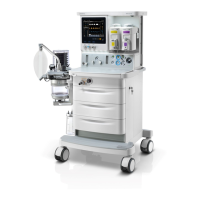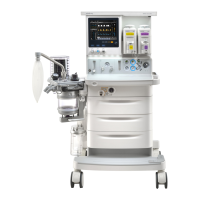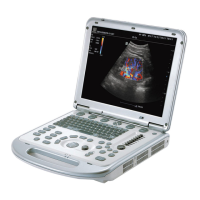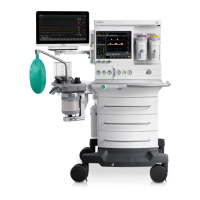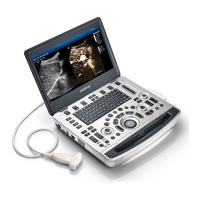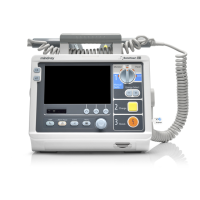6-15
6.9.7 Test the Low Paw Alarm
1. Set the bag/mechanical ventilation switch to the mechanical position.
2. Select the [Alarm Setup] shortcut key and then [Ventilator >>].
3. Set the Paw low alarm limit to 2 cmH
2
O.
4. Disconnect the manual bag from the Y piece patient connection.
5. Wait for 20 seconds. View the alarm area and make sure that a low Paw alarm occurs.
6. Connect the manual bag to the manual bag port.
7. Make sure the low Paw alarm cancels.
6.9.8 Test the AG Module Alarm
1. Refer to 13.6.2Install the AG Module and then refer to9.4Prepare to Measure AG.
2. Disconnect the gas sampling tube and connect the tube to the standard gas bag filled
with AA (5% CO2 must be contained). AA stands for any of the five anesthetic agents:
Des (desflurane), Iso (isoflurane), Enf (enflurane), Sev (sevoflurane), or Hal (halothane).
3. Select the [Alarm Setup] shortcut key and then [Gas Module >>]
4. Set the EtAA high alarm limit to be lower than the concentration of the standard gas.
5. Make sure that a high EtAA alarm occurs.
6. Set the EtAA low alarm limit to be higher than the concentration of the standard gas.
7. Make sure that a low EtAA alarm occurs.
6.10 Preoperative Preparations
1. Make sure that the ventilator parameters and alarm limits are set to applicable clinical
levels. For details, refer to 4 Operations and Ventilation Setup.
2. Make sure that the system is Standby.
3. Make sure that the equipment for airway maintenance, manual ventilation and tracheal
intubation, and applicable anesthetic and emergency drugs are available.
4. Set the bag/mechanical ventilation switch to the bag position.
5. Connect the manual bag to the manual bag port.
6. Turn off all vaporizers.
7. Turn the APL valve control to fully open the APL valve (MIN position).
8. Turn all flow controls to set all gas flows to minimum.
9. Make sure that the breathing system is correctly connected and not damaged.
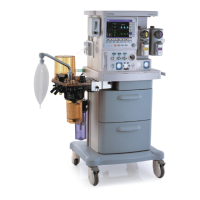
